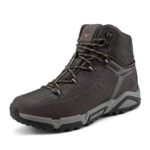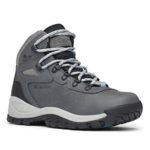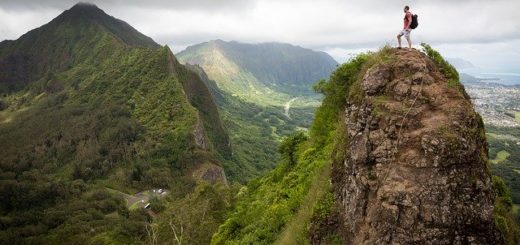What Constitutes Hiking? A Casual Guide
by Josephine Y ·
This page may contain affiliate links. For more information, see our "About Us" page.
What Constitutes Hiking?

Hiking has risen in popularity recently, resulting in people of all skill levels getting out and enjoying the great outdoors. The ability of almost anyone to do some kind of hiking makes it an easy foray into outdoor adventuring. There is an entire industry devoted to hiking gear, from shoes to specialized clothing, but hiking is one of those rare activities that can be satisfying with minimal experience and monetary investment to start out with. But, what actually constitutes hiking?
So, what is hiking? Hiking is traversing terrain, whether on a trail or through the countryside, for long distances. You hike when you are walking a trail. This might be for a day, thus called a day hike, or it can be longer and include stops for camping or other activities. Walking is the main identifier of a hike, but more challenging routes may include climbing terrain. Hiking could also mean walking dense terrain without a path. It’s harder and is done in more secluded areas than a walk around town, but different from equipment-specific activities like trekking and backpacking. As far as outdoor activities go, it’s a perfect entry point for most people.
Hikes could require dense foliage be removed or “bushwhacked” (literally whacking bush aside). Hikes might also mean stopping to engage in other strenuous activities that involve additional training. This means things like swimming, climbing, or other hobbies may be included or even the end goal of a hike.
All that being said, paved hiking trails and an increased understanding of the needs of differently abled folks means hiking these days can now be done by people in wheelchairs or who need the assistance of walking aids like canes. In fact, some hikers prefer to use hiking poles no matter what to assist with more vertical terrain and uneven ground.
Hiking can be an inclusive activity, done with or without extremely specialized equipment, unlike some other forms of getting around outdoors. It’s easy to perform as a group, or even on your own. This versatility makes hiking different from more intense forms of outdoor exercise and experiences.
Terminology
The term “hiking” itself is primarily used in the United States, though sometimes folks in the United Kingdom make use of it as well. It can also be covered under the umbrella “walking” in some countries, but in the U.S. we usually differentiate this harder, more specifically long distance form of exercise from a leisurely stroll.
“Trekking” is another word that is sometimes used to mean walking long distances. However, this implies a more challenging journey. While brush may need to be cleared on a hike, a trek can include more strenuous distances and terrain. The equipment required will be more specialized to the region and weather conditions expected during a trek as well. In essence, hiking is for leisure and recreation, and trekking is to challenge yourself using skills and training you practice beforehand. Either might be done with other people, but trekking may require you rely on those people more to get through it as well.
When going for a walk, we’re usually getting from one place to another. On a hike we are focusing on the journey. There might be a great view at the end, but you’re walking over terrain to enjoy it.
Hikes have to be planned because while they are often done on trails, they require traversing farther distances for longer periods of time without modern conveniences. Parks may have convenience stores for light snacks, but on the trail it will be up to you to provide everything you need for a fun and easy hike.
When we’re talking about multiple days out in wilderness, hiking is usually considered a component of backpacking. Unlike standard hiking, you will have to bring all of your gear for eating, sleeping, and cleaning yourself with you. You will also have to plan more stops for meals, rest, and whatever else you’re seeking to do while out in the world for your backpacking trip.
Planning for a Hike
Unlike going for a walk, hiking will require some planning. It will not be necessary to plan as much as a trek or backpacking, where all of your equipment can mean the difference between wasting time and putting yourself in danger, but just like any trip planning ahead is the right place to start your hike. Even on the easiest, paved trails, you will be outside in the elements and may need special equipment. It is also going to be necessary to understand what you will be in for as far as the day ahead.
It’s usually a good idea to bring special equipment when hiking, and some kind of supplies. There are lots of products marketed toward serious hikers, but the basics required would be water, snacks, a good pair of boots or shoes, sensible weather wear, and a bag to carry it all in that is comfortable to carry long distances. Optional items for more advanced hiking would be walking poles, first aid items (especially if going on longer, more secluded hikes), a compass, and a light source in case it gets dark.
Things do not always go as expected on a hike, but before you set out, a general idea of how long you will be gone is a good idea. Unlike going for a walk around your neighborhood, you will also want to let someone know generally where you are going and think about your options for getting in contact. Some trails tend to lose cell reception so understanding the area you will be hiking through and whether there will be a ranger station nearby is key as well.

Finding out whether the area is popular for casual to intermediate hikers or not will also help you plan. Popular trails tend to have maps posted at their entrance or even along the way. If you are heading out across terrain or trails that are less commonly traversed by the general population, make sure to bring a map and take a look at the area ahead of time.
After all, a hike is not necessarily heading out into an area you would commute through every day. Even popular paths will have fallen trees or unfamiliar trail branches that you could easily wander onto and get turned around or have your direction changed. The unknown can be part of the appeal, but you don’t want it ending your hike early!
As far as equipment goes, understand what will be necessary if the hike will last more than one day. If it’s just going to be a couple of hours along trails, good shoes, some protein-heavy snacks, water, and items like sunscreen or a raincoat may be all you require besides the things you always carry with you like a phone and wallet.
Make sure whatever you are carrying everything in is more secure than your pants pockets- you wouldn’t want to lose your keys in the woods! There are a variety of backpacks sold for activities like backpacking, but a small one will do for a day hike so long as it is sturdy and will not tear while you’re on your journey.
Longer hikes will require more planning. Where you are going to eat, what you will eat, and where good places to rest and refill water are all things you should keep in mind. It may take a bit of research before you set out, but it will result in the best possible experience while out on the hike.
This also means a harder walk, so closer attention should be paid to footwear. Tennis shoes could serve on short hikes, but there are decades of shoe designs related to hiking gear, especially boots, for a reason. Boots we use for hiking will need to have better grip than normal walking. They will also need to be versatile, as hiking can bring you through all kinds of ground. Something like the Nortiv Men’s Waterproof Hiking Boots or Columbia Women’s Newton Ridge Plus Waterproof Hiking Boots with an ankle height and waterproof materials should get you through most hikes. Besides boots and a backpack, you can start with just comfortable, sturdy clothes and a water bottle for equipment.
What Constitutes Hiking? A Casual Guide - Conclusion
As you advance in hiking, you will figure out what kinds of equipment suits the kinds of things you want to do. It’s also a great first step toward harder trekking, long distance backpacking, or that trip to walk around the world you’re planning. No matter where your hiking takes you, it’s an activity you will be able to enjoy at any time and at any age. Knowing what constitutes hiking should give you a good start with knowing what to expect. If you’re preparing for a hike, consider reading our articles “DIY Mini First Aid Kit Guide for Safety” as well as “How to Fold Clothes for Backpacking“. On the other hand, if you’re looking to learn more about hiking, check out “What Is Scrambling In Hiking?“. Happy traveling!






